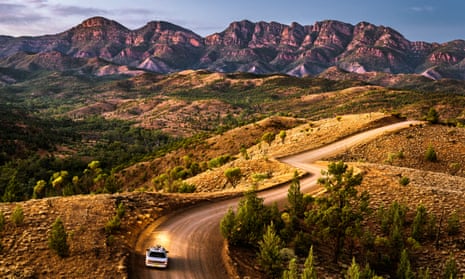South Australia’s iconic and fossil-rich Flinders Ranges is one step closer to being declared one of Australia’s natural wonders on the Unesco World Heritage List.
The area has been nominated for a tentative listing as a world heritage site, on behalf of the South Australian government and the area’s traditional owners, the Adnyamathanha people.
Home to significant fossil deposits, the region was dubbed “one great outdoor museum” by 20th century explorer and geologist Douglas Mawson.
“More than 600m years old, the Flinders Ranges is one of Australia’s magnificent landscapes,” said state environment minister Susan Close.
“The fossils and geology of the region are particularly fascinating, displaying the history of our planet and the evolution of life on Earth.
“Some of this critical evidence includes the world’s finest example of the Ediacaran explosion of life when the earliest forms of complex multicellular animal life evolved.”
The geological and paleontological forms within the Flinders Ranges make it an important site to pursue world heritage status, the minister said.
Lead authors of the heritage bid have toured several key sites to assess the scientific values of sites including along the Brachina Geological Trail and in Nilpena Ediacara national park.
The group includes internationally renowned professor and palaeontologist Prof Mary Droser from the University of Southern California.
“There are places that have parts of the story, and there are places with phenomenal fossils, but the Flinders has this complete packaging that is really accessible. We can go back in time and see how life unfolded. The record is unparalleled,” Prof Droser told the BBC.
As part of the heritage process, the bid team met with the locals from the ex-copper mining town of Blinman, 425km north of Adelaide, to discuss the potential heritage listing.
The group also plans to tour Arkaroola and Vulkathunha-Gammon Ranges national park next month.
The assessment process is expected to take at least another two years before the Flinders Ranges could be added to the World Heritage List in 2025 at the earliest.
Upgrades to visitor facilities along the Brachina Geological Trail are already under way.
World Heritage listing is coordinated by Unesco through the World Heritage Centre, with independent evaluations and recommendations to the World Heritage Committee about whether a nomination should be included.
